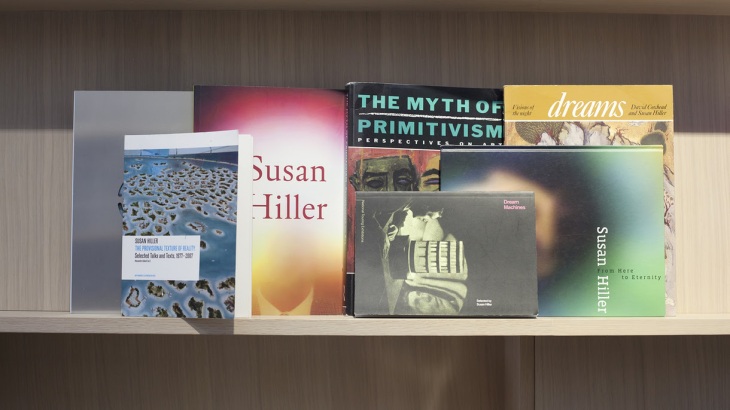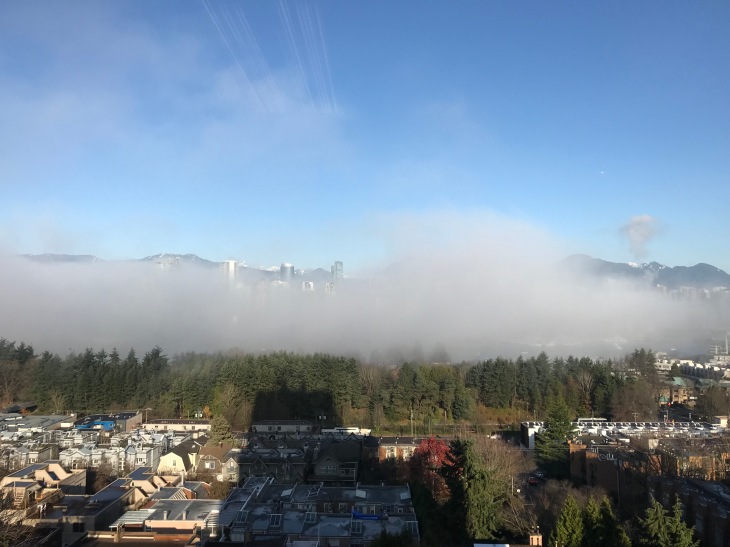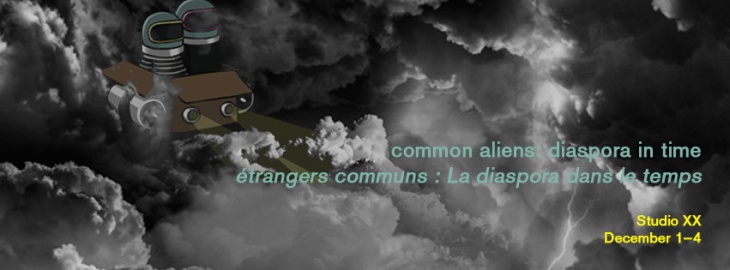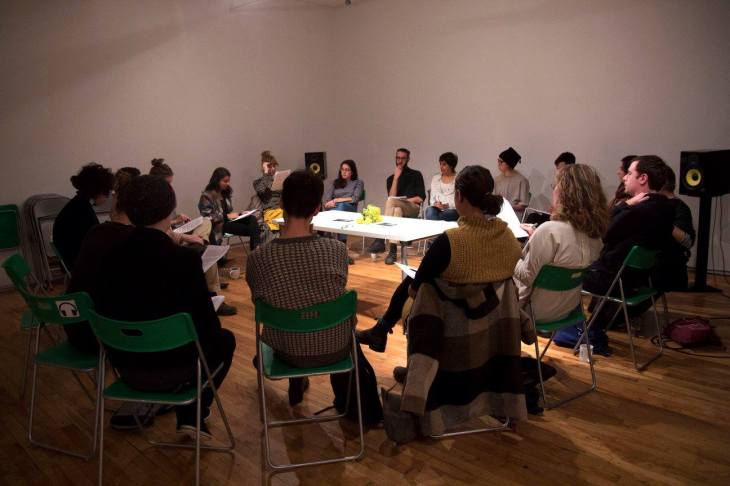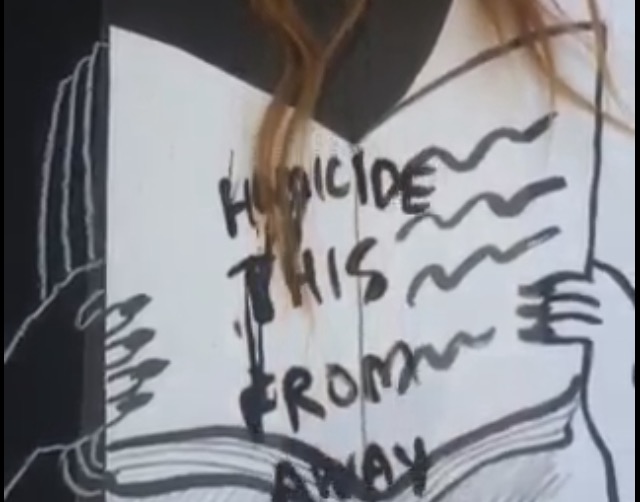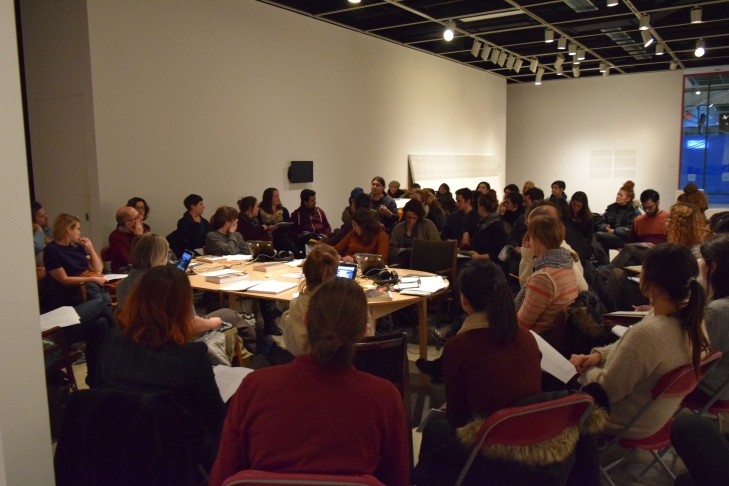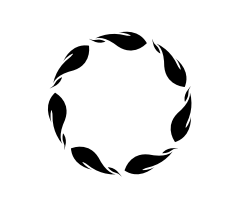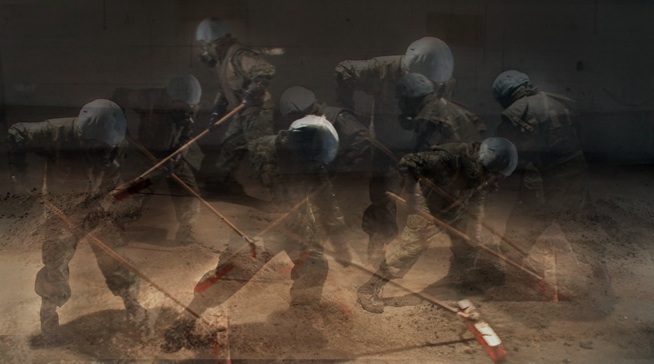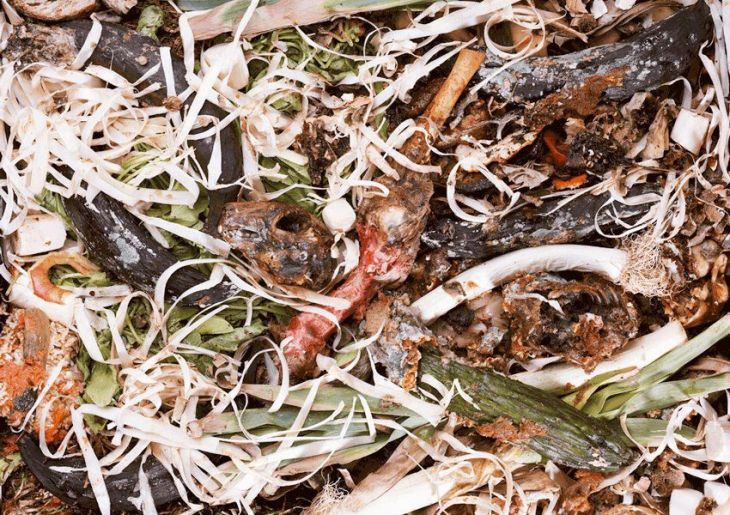 No Reading After the Internet is excited to be co-presenting the summer session of SCHOOL, an ongoing series of informal school-type seminars for people of any and all educational backgrounds organized by Jonathan Adjemian and Xenia Benivolski.
No Reading After the Internet is excited to be co-presenting the summer session of SCHOOL, an ongoing series of informal school-type seminars for people of any and all educational backgrounds organized by Jonathan Adjemian and Xenia Benivolski.
Eating Bodies: Towards a Consummate Consumption will be facilitated by Leila Timmins and cheyanne turions.
Readings will be sent out in advance of each session by email. We invite all styles of engagement with the texts—mastery is not expected, desired nor possible. Those interested are strongly encouraged to attend all four sessions if possible, but drop-ins are welcome too.
PWYC donations taken after each session, all of which go to thank the facilitators for their time.
If you are planning to attend, please email quoteschool@gmail.com to ensure that you get readings and notifications. All are welcome.
What else is food, beyond nourishment? This summer session of SCHOOL will focus on the social and aesthetic aspects of food, where eating is considered as act with repercussions beyond the fulfillment of a basic need. Drawing on texts that operate outside of the sentimentality and machismo pervasive in much food writing, taste will be explored as something conditioned by class, gender, culture and history. Born of a desire to indulge and critically interrogate our tastes, especially as they resonate outward from our own plates, we hope to use food as symbol for human relations, exploring patterns of interaction between and within societies.
Over the course of four weeks, we will read a variety of texts—theoretical and comedic, historical and contemporary, fiction and not. Approaching SCHOOL as an experiment in informal education, please note that we are not experts in these texts, though our curiosity is voracious. Understandings of the texts will be performed collectively, and in addition to generally discussing each week’s theme, participants will be asked to share selections from the texts they find incendiary or spot-on. These observations will be used to guide our conversations.
Colonial Foodstuffs
12 July 2015, 4 PM
MOCCA (952 Queen Street West)
with guest Jonah Campbell
Reading Jonah Campbell’s “Notes Preliminary to Actually Thinking About an Anti-Colonial Food Writing” from Still Crapulent and Kyla Wazana Tompkins’s “‘She Made the Table a Snare to Them’: Sylvester Graham’s Imperial Dietics” from Racial Indigestion: Eating Bodies in the 19th Century

Session one, “Colonial Foodstuffs,” hosted within Dean Baldwin’s “Queen West Yacht Club.” Photo documentation by Xenia Benivolski.
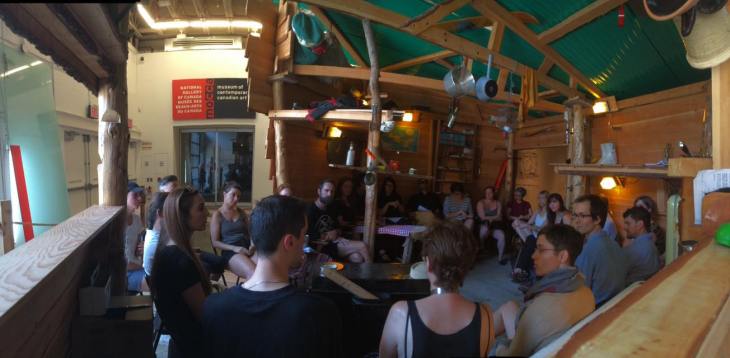
SESSION ONE, “COLONIAL FOODSTUFFS,” HOSTED WITHIN DEAN BALDWIN’S “QUEEN WEST YACHT CLUB.” PHOTO DOCUMENTATION BY Brett Despotovich.
Gluttony
19 July 2015, 4 PM
8-11 (233 Spadina Avenue)
Reading Kingsley Amis’s “The Hangover” from Everyday Drinking; M.F.K. Fisher’s “G is for Gluttony” from An Alphabet for Gourmets and “How to be Cheerful Through Starving” from How to Cook a Wolf; and Walter Benjamin’s “Fresh Figs” from his Selected Writings: Part 1 1927-1930.

Session two, “Gluttony,” hosted in 8-11’s backyard. Photo documentation by Gabby Moser.
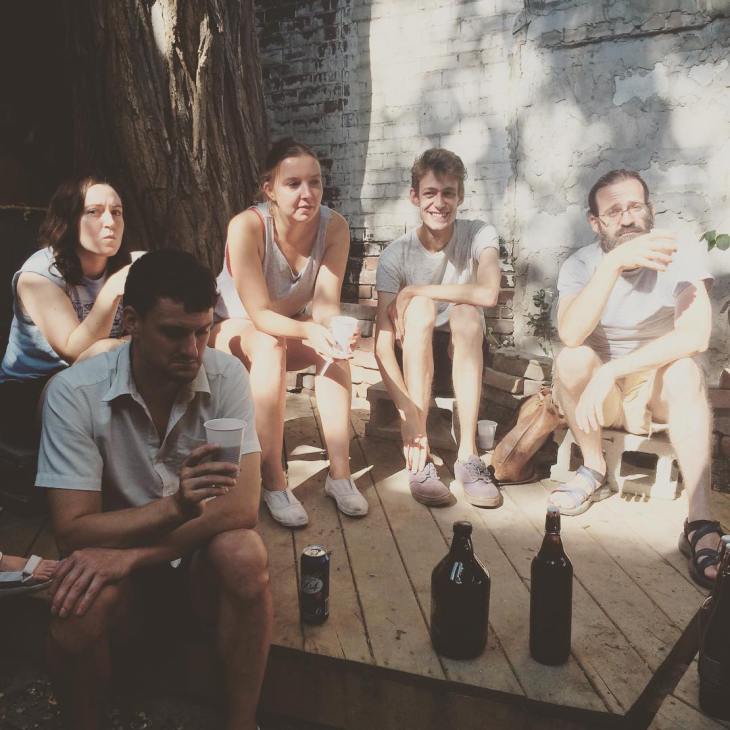
Session two, “Gluttony,” hosted in 8-11’s backyard. Photo documentation by Leila Timmins.
Cannibalistic Feminisms
26 July 2015, 4 PM
MOCCA (952 Queen Street West)
Reading Jonah Campbell’s “On Nigella Lawson, Impossible Witnessing, and the Reification of Analysis” from Still Crapulent; excerpts from F.T. Marinetti/Fillia’s The Futurist Cookbook; and excerpts from Three Banquets for a Queen, edited by Charlotte Birnbaum; as well as watching Candice Lin’s Tales from the Kitchen: Beggar’s Revenge Chicken.
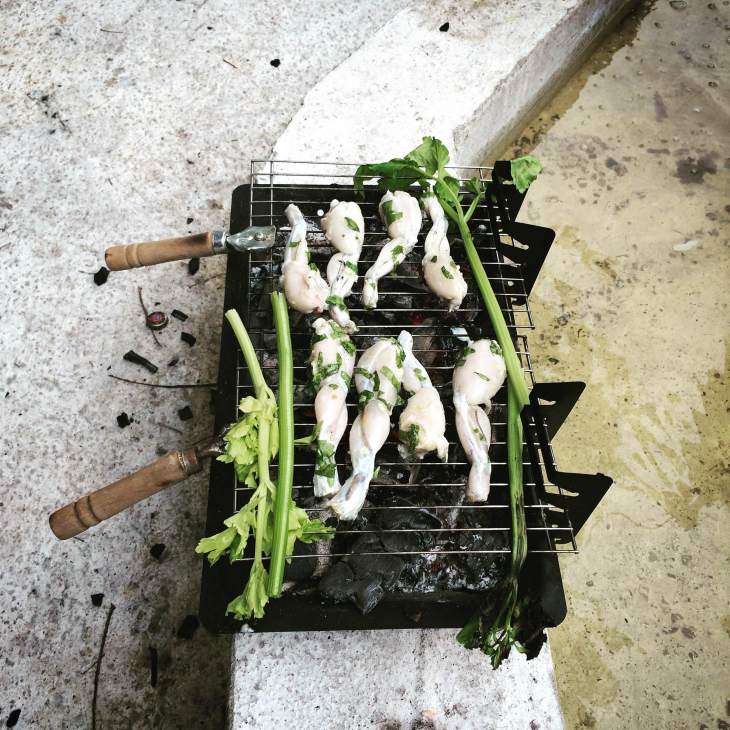
Impromptu post-salon BBQ of frog legs and celery, courtesy of Dean Baldwin. Photo documentation by Leila Timmins.
Art-food and Taste-making
02 August 2015, 4 PM
8-11 (233 Spadina Avenue)
with guest Danielle St-Amour
Reading Martha Rosler’s The Art of Cooking: A Dialogue Between Julia Child and Craig Claiborne, Helen Rosner’s “Christina Tosi Climbs to the Top of Cool Girl Mountain With ‘Milk Bar Life’” from Eater, Carolyn Korsmeyer’s “The Meaning of Taste and the Taste of Meaning” from Making Sense of Taste and Carol Goodden’s “FOOD and the City” from Collapse VII.
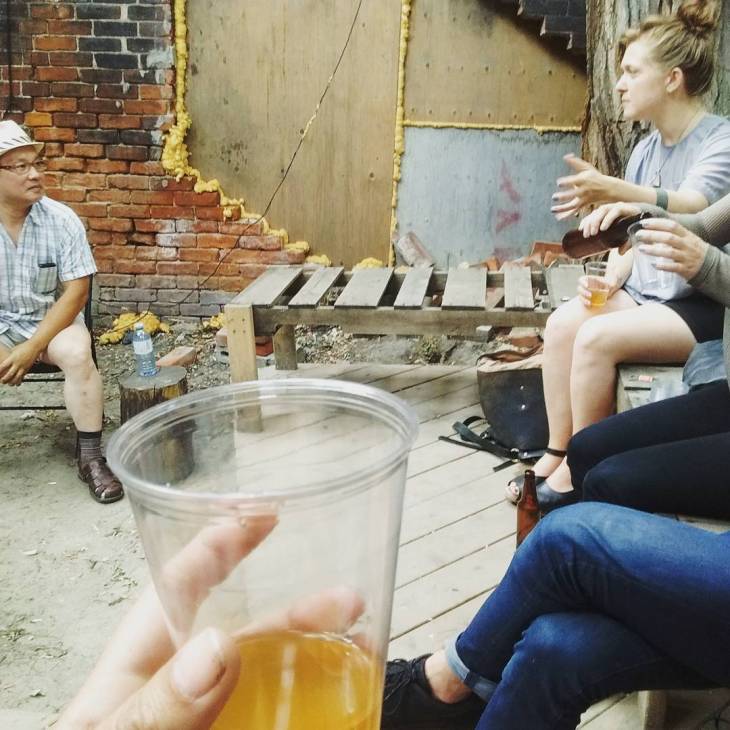
Drinking onion wine in 8-11’s backyard. Photo documentation by Xenia Benivolski .
**
LEILA TIMMINS is a writer and curator based in Toronto. She is the Head of Exhibitions at Gallery 44 and currently sits on the Board of C Magazine and the Education Programming Committee at the Art Gallery of Ontario.
CHEYANNE TURIONS is an independent, Toronto-based curator and writer. She sits on the Board of Directors for Kunstverein Toronto, the Editorial Advisory Committee for C Magazine and the Advisory Board for the newly federated institution comprising the Justina M. Barnicke Gallery and University of Toronto Art Centre. She is the director of No Reading After the Internet (Toronto).
Thanks to MOCCA and 8-11 for their support of this session of SCHOOL and thanks also to the Liaison of Independent Filmmakers of Toronto for their ongoing support of No Reading After the Internet (Toronto).
